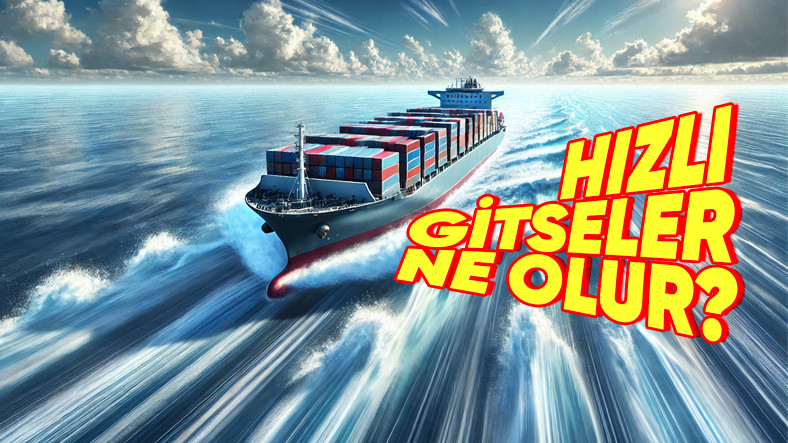The captains said, “After all, the roads are empty. Let’s speed up some!” Don’t they say?
The answer to this question is much more complex than one might think. different details Contains.
One of the most important factors that determine the speed of ships is fuel consumption.
As a ship increases its speed, fuel consumption increases exponentially. As the speed increased, the ship encountered water resistance is also rising. In this case, engines need to produce more power and as a result, more fuel is consumed.
Therefore, going at full speed in an empty space in the seas is actually a serious economic burden It means. In the maritime industry, since fuel costs constitute a large portion of total operating expenses, they often prefer to sail at the most efficient speed, that is, “economic speed”.
Another important effect of speed is on the general maintenance need and life of the ship.
Ships traveling at high speed are more vibration and stress is exposed. This increases the risk of wear and tear on the ship’s mechanical parts over time. Thus, ship maintenance becomes more frequent and costly.
Sailing at a lower speed prolongs the life of the ship and reduces maintenance costs. As a result, ship owners and operators stick to speed limits to benefit in the long run.
Another reason that limits the speed of ships is environmental concerns.
Driving at higher speeds not only increases fuel consumption carbon emissions released into the environment It also increases. Nowadays, as sustainability and environmental awareness become increasingly important in the maritime industry, ship operators are sailing at lower speeds.
In this way, they both protect the environment and international maritime rules and comply with their agreements.
Dangers at sea are also taken into consideration.
Lower speed, more maneuverability means. In this way, they travel less distance to come to a complete stop. Reaction to dangers such as other ships or obstacles is also provided and collision risk is decreasing significantly.
Also, low speed dolphin and whales It is also important for living animals that find food by navigation. Because when ships travel at low speed, underwater noise also decreases.
Obeying the speed limit also helps with time management.
Another reason why ships sail at the speed limit is the speed of the journey. planning and time management. Ships traveling between ports are usually scheduled to arrive at the destination port on a specific date.
This means the speed of the ship, weather conditions, route and it means it has to be carefully adjusted, taking into account the congestion at the ports. Early arrival can sometimes increase waiting times at ports, which means additional costs.
In summary, the breadth and freedom of the seasIt does not require ships to speed up, but rather to navigate in a more planned, safe and economical manner.
Want to learn more about ships?
RELATED NEWS
The Marvelous Engineering Behind Icebreaker Ships’ Ability to Proceed in Water Covered with Meters of Ice
RELATED NEWS
The Important Reason Behind Warships Being “Grey” Color Unlike Normal Ships
RELATED NEWS
Why Do Modern Cargo Ships Have Flat Bottoms?
RELATED NEWS
How come metal ships do not rust even though they are constantly on water?
RELATED NEWS


